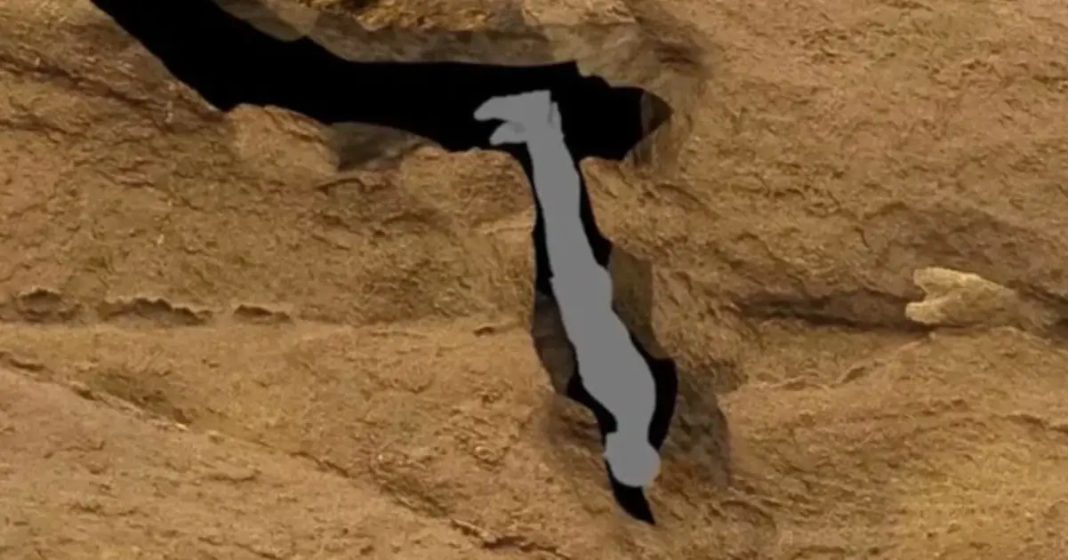The Tragic Tale of John Edward Jones: A Cave Exploration Gone Wrong
In November 2009, a harrowing incident occurred that would leave an indelible mark on the world of caving and rescue operations. John Edward Jones, a 26-year-old medical student and devoted father, embarked on what he thought would be an adventurous outing with his brother and friends in the infamous Nutty Putty Cave located in Utah. However, this excursion turned into a nightmare that ultimately cost him his life, raising awareness about the unforeseen dangers of cave exploration.
Cave Exploration: A Hobby Turned Hazardous
Jones was known for his enthusiasm for caving, often exploring various underground networks. Caving, also known as spelunking, is an adventurous activity that attracts many thrill-seekers with promises of discovery and exploration. On that fateful day, he and his companions ventured into Nutty Putty Cave, a site renowned for its complex and treacherous passages, which include tight squeezes and vertical drops that challenge even the most experienced cavers. While navigating through the cave system, Jones made a fateful decision to explore an unmapped section, which proved to be a claustrophobic passageway measuring a mere 10 inches high and 18 inches wide. Once he realized his predicament, it was too late—he found himself trapped and unable to move, a situation that would soon become a matter of life and death.

A Desperate Rescue Effort
Upon discovering that his brother was stuck, Jones’ brother immediately alerted authorities, which initiated a massive rescue operation that spanned over 27 grueling hours. Rescuers from various agencies, including local fire departments and specialized cave rescue teams, converged on the scene, working tirelessly as they took turns attempting to free John from the unforgiving grip of the rock. The challenging conditions of the cave, compounded by limited visibility and the threat of falling rocks, made the operation even more perilous. As the hours dragged on, the situation began to deteriorate. Hanging upside down for an extended period caused blood to rush to his head, leading to serious medical complications that greatly endangered his life. Rescuers worked against the clock, trying to devise a plan while grappling with the oppressive reality of the situation.
Conversations of Hope Amidst Despair
During the rescue efforts, rescuers managed to bring in a radio, allowing desperate communication between John and his family. His brother Josh, who remained on-site throughout the ordeal, reported that family members, including his father and wife, spoke words of encouragement that offered a glimmer of hope amid the anxiety and uncertainty. They reassured him that they loved him and were praying for his safe return. “His father even gave him a blessing,” Josh recalled, a poignant moment amidst the chaos. Despite the uplifting conversations, John remained acutely aware of his dire circumstances, famously expressing, “It sucks. I’m upside down. I can’t believe I’m upside down. My legs are killing me.” Such raw honesty painted a stark image of the emotional and physical toll this experience was taking on him.

The Final Hours
As the rescue team struggled to secure ropes around John’s feet in an effort to hoist him out, the reality of the situation became increasingly grim. A sudden failure of equipment—a snapped pulley—propelled Jones deeper into the cave, worsening his condition. After more than 25 hours of confinement, he tragically became unresponsive, and his body began to shut down. Descriptions of the scene became increasingly bleak, with rescuers expressing doubts about the feasibility of extracting him from such a precarious position. “His feet would hit the ceiling, with no room to maneuver,” one rescuer remarked, highlighting the critical nature of their struggle. The urgency of the situation resonated with everyone involved; each minute lost felt like an eternity as hope dwindled.
A Heartbreaking Conclusion
Ultimately, John Edward Jones suffered a cardiac arrest and tragically suffocated in the cave. The authorities deemed it too dangerous to attempt a recovery of his body, leading to a heartbreaking decision to seal the passage permanently with explosives. This act transformed Nutty Putty Cave into an eternal resting place, marking the end of a story that began with adventure and hope but concluded in tragedy. This decision haunted the rescue team, as they were forced to abandon their final mission to bring him home, reflecting the harsh realities of cave rescue operations and the limits that nature imposes on human endeavors.
A Memorial to a Life Cut Short
Even today, a memorial plaque stands at the entrance of Nutty Putty Cave, serving as a somber reminder of that tragic day and the risks associated with cave exploration. It serves to honor John Edward Jones, whose life was cut short under such horrifying circumstances. His story is a poignant reminder of the unpredictability of nature and the inherent dangers of adventure sports, urging both enthusiasts and novices alike to approach such activities with essential caution and awareness. The memorial not only pays tribute to John but also serves as an educational tool, highlighting the importance of proper training and safety measures in caving. Local caving organizations often use his story to promote best practices and ensure that adventurers are equipped with the knowledge necessary to navigate the complexities of underground exploration safely.
John’s legacy lives on, not only through the memorial but also through the lessons learned from this tragic incident. The story of his fate serves as a cautionary tale for future adventurers and emphasizes the need for safety measures and awareness in the world of exploration. It reminds everyone involved in recreational sports to respect the environment and to be mindful of the risks that come with pushing the boundaries of exploration. As the caving community honors his memory, they also raise awareness about the importance of responsible caving practices, stressing that adventure should never come at the cost of safety.

















